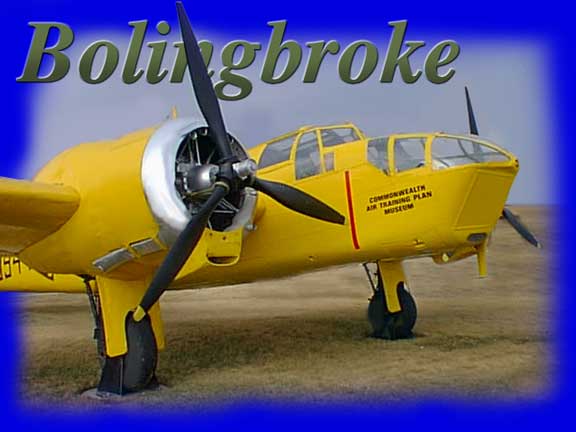 |
| FTLComm - Brandon MB - April 27, 2000 |
In March of 1934 the British air force consisted mainly of biplanes, though they
had looked at stressed skinned monoplanes only one badly performing bomber was in
service. Lord Rothermere, a wealth newspaper publisher needed a business plane that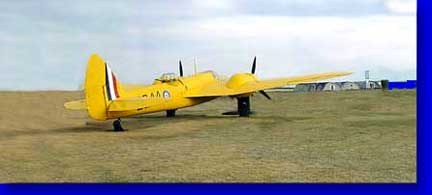 would carry
six passengers and pilot at better than 240 mph and he asked Bristol Aircraft to
design and build him such a machine. A designer named Barnwell set to work on the
project but Bristol were extremely cautious about turning out a civilian aircraft
that would make the air force planes look bad. would carry
six passengers and pilot at better than 240 mph and he asked Bristol Aircraft to
design and build him such a machine. A designer named Barnwell set to work on the
project but Bristol were extremely cautious about turning out a civilian aircraft
that would make the air force planes look bad. The thirties in England were a time when the orgy of death from World War I was still fresh in the minds of the people and the politicians and the British government was trying to talk itself into the idea that the rumblings in Germany would be negotiated away. But the events in Austria and Spain quickly began to change the way people thought and Bristol's new aircraft made its first flight April 12, 1935 with wooden propellers. Shortly, US made Hamilton Standard propellers were available and the designer himself was astonished to discover the Bristol type 142 could fly at 307 mph a full eighty miles per hour faster then the fastest British fighter of the day. |
 Realising it was time to catch up the air ministry in July of 1935 drew up specifications and ordered fifty military versions of the 142 calling it the "Blenheim". The military version had the wings mid body, a bomb bay added and a retractable turret. These first versions would fly with 840hp Bristol Mercury nine cylinder radials and were delivered to squadrons in March of 1937. The Blenheim could fly rings around the other British aircraft of the day and that performance lead to a considerable number of loses due to poor training. The military situation in Europe was becoming increasingly tense and as a stop gap two hundred Blenheims were produced asfighters with a four gun fixed belly pack. Some of these would be the first night fighters to enter combat equipped with radar. The Blenheim was to become an extraordinarily busy aircraft with the outbreak of war and fortunately the air ministry had recognised the situation and Blenheims had been produced by Bristol itself, Avro and a consortium of car manufacturers called Rootes. They were used in all sorts of roles from sea patrol, to fighters and carried out the first British attacks on Germany with daylight raids on Bremen and Cologne from bases in France. |
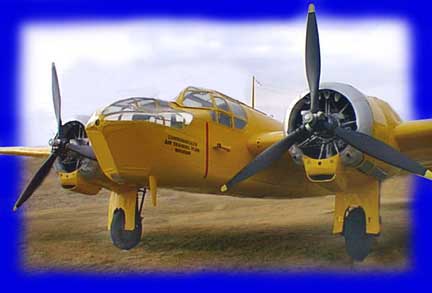 The little twin bomber was a stop gap aircraft that gave the British and their Commonwealth allies a chance to get more modern planes into production. Canada's prewar and early war air force was a rag tag bunch of things that looked like they were leftovers from the first war and began producing a Canadian version of the Blenheim was produced by Fairchild Canada. The Canadian version was called the "Bolingbroke" and was the fourth version or modification of the aircraft with a three foot longer fuselage giving the bomb aimer a work station out in the glassed nose. The one pictured here has the two lower nose panels painted over but in all operational aircraft these were clear Plexiglas If you look closely you can see the fixed Browning 303 machine gun in the very centre of the aircraft's nose. Canadian squadrons were formed of Bolingbrokes for coastal watch, as light bombers and fighter bombers. They were used all over the country and saw combat in Alaska. Canadians, of course adapted this machine to uses skis and even had one rigged to operate on floats off water. But by far the most important use of the Bolingbroke was as a bomber training aircraft where it was a step up from the Cessna Crane and Avro Anson which were used for twin engine conversion, cross country navigation training. (This example is part of the Brandon Commonwealth air training museum's collection and stands near highway number one next to a Macdonalds) |
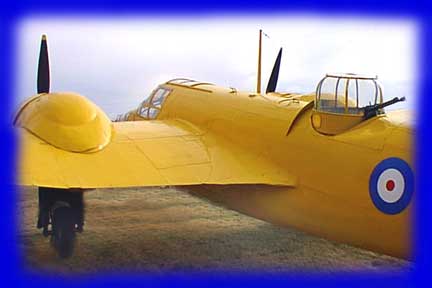 The roots of the Blenheim/Bolingbroke was as a civilian transport and Bristol had set to work immediately to use what they learned in its production to create a dedicated military attack aircraft. The Bristol type 152 Beaufort was a slower but more heavily armed version of the Blenheim but the Bristol type 156 Beaufighter was a dedicated night and ground attack weapon that was used in Europe and all theatres of the war. With these and other much better aircraft available the Blenheim was being phased out of the front line action as early as 1941 and by 1942 were serving in non-combat roles in Europe. All told 6,260 examples were built around the world with Finland continuing to use them up until 1956. When we think of the impressive Spitfire and the magnificent Lancaster as the supreme British aircraft of World War II we have to realise that the Blenheim, Hurricane and Westland Lysander were just as vital to the eventual victory and here in North America, they were almost the entire show. |
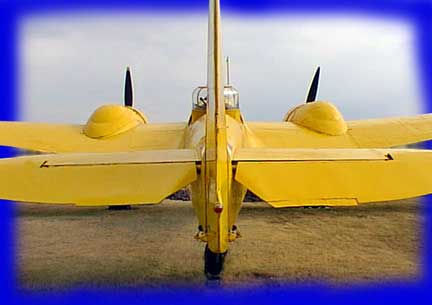 The Bolingbroke was equipped with either Cyclone or Twin Wasp Junior engines that produced about 920 hp and would move it along at 283 mph, climb to 29,500 feet and had an operational range of up to 1,600 miles. They could deliver a 1,000 bomb and many were equipped with a chin turret fired by the bomb aimer using a periscope. They have a wing span of 56 feet 4 inches and were 44 feet long and weighed without fuel and payload up to 17,000 lb. Besides the standard configuration there had been a clipped wing high speed low level photo-recon version and the Bisley, a heavily armoured two seat ground attack version. |
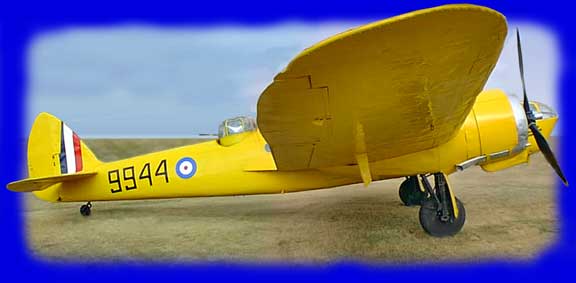 |
| --------References: |
Bowyer, Chaz - History of the RAF, Bison Books Ltd. London, 1977, pp 64 - 75 |
Gallagher, Brendan - Illustrated History of Aircraft, Octopus Books Ltd., 1977 pp 58 - 73 |
Gunston, Bill - Aircraft of World War 2, Octopus Books Ltd., London 1980, pp. 33 -37 |
|
|
|
|
| -------Links to Sites that refer to the Blenheim and Bolingbroke |
|
|
|
|
|
|
Order of battle, Canadian air force December 1941. |
Bolingbroke IV made by Fairchild Canada pictured on floats. |
The national aviation museum's page on the Bolingbroke with pictures and specifications. |
|
|
|
Here is a list of pictures on the web of Blenheim and Bolingbroke aircraft. |
Click "Here"
to go to Ensign Front page
If you accessed this page directly from an alien search engine you can see North Central Internet News by clicking here.
Ensign, North Central Internet News, published daily
by Faster Than Light Communications, FTLComm